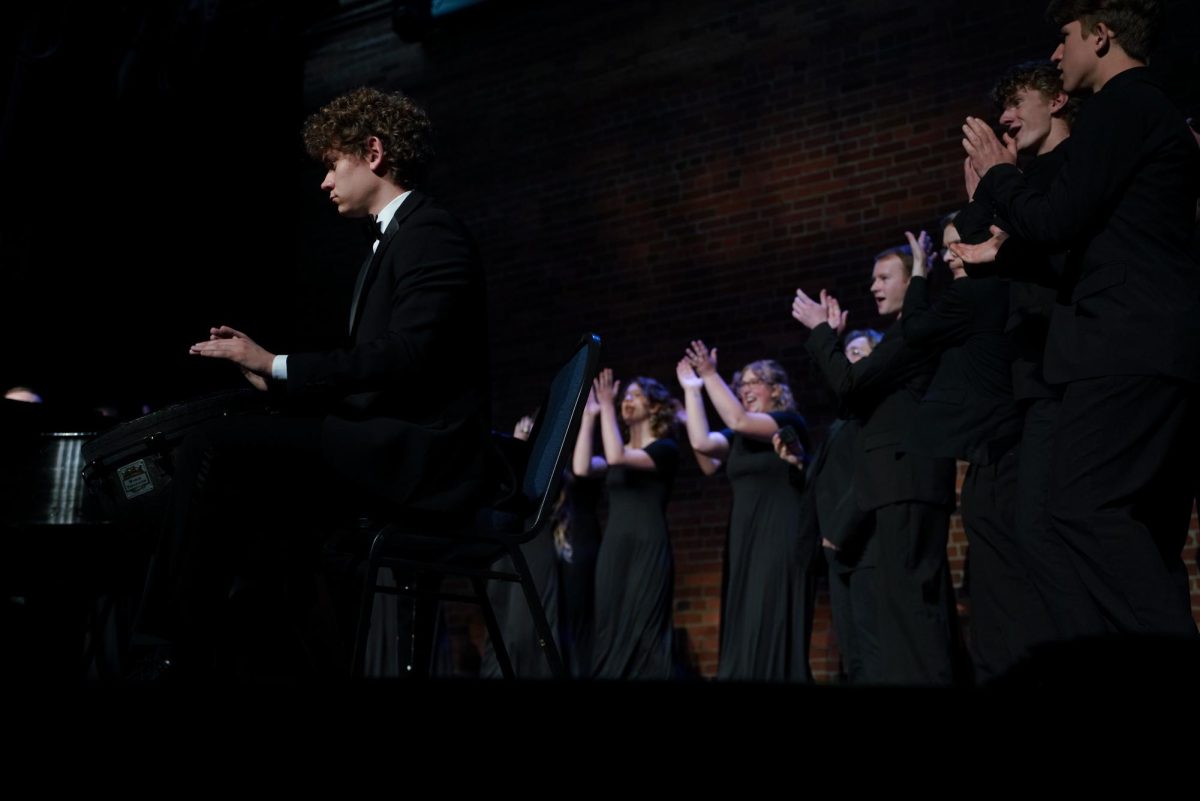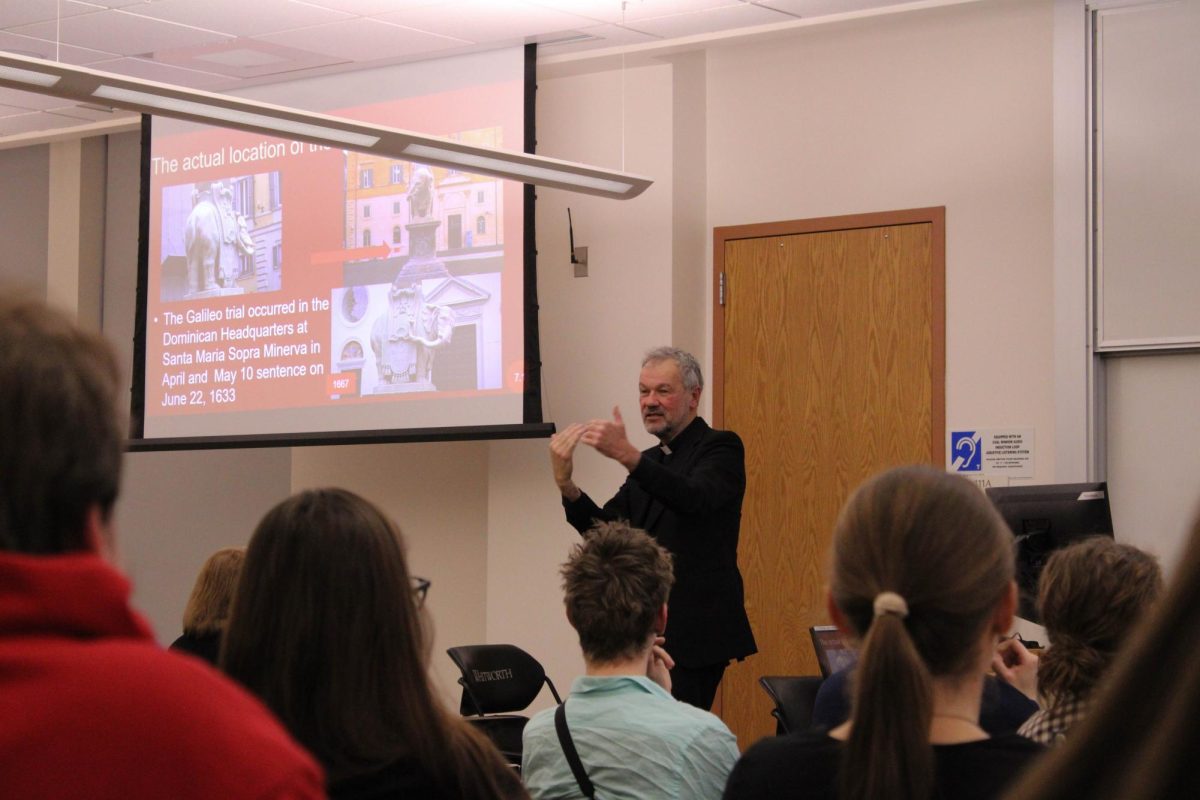The only thing in the Bryan Oliver Gallery is some benches. It’s dark inside the room and curtains hanging across the doorway. A movie is playing across one of the walls.
All the sudden, a shirtless man walks across the screen. He is pulling a large, short man in a straight jacket in a wagon, and he is singing “You are my sunshine.”
The video is called “The Embodied Self” and is part of the current exhibit at Whitworth. Kent Anderson Butler is the man in the straight jacket, and he is a performance artist who works with digital media like photography and video installations.
“To be an artist and engage myself is something I have to do,” Butler said. “It’s how God made me; it’s my calling.”
Butler is based out of Los Angeles, Calif. He is a professor at Azuza Pacific University, where he teaches photography.
Although Butler has been interested in art for most of his life, he originally thought he would become a graphic artist.
“I took a class and it changed my life,” Butler said. “After a couple of semesters, I realized I didn’t have an interest in design, so I went to the dark side.”
The dark side was studio art, with a drawing and painting emphasis.
“I started dabbling with video and my body,” Butler said. “[My body] is present in most of my art, because it’s available to me, and because of my body I have a substantial personal history.”
Butler was born prematurely- he was six pounds three ounces when he was born. He said he had 20 surgeries between birth and high school.
“I’m interested in the body itself, physically and spiritually,” Butler said. “My soul lives in this vessel and when I pass on my soul will live somewhere else in a different form in heaven.”
The content of Butler’s work is driven by his questions about human existence, said Stephen Rue, a lecturer in the art department and the gallery director for this year. A lot of Butler’s questions are large, and hard to define– like questions about pain, suffering or redemption Rue said.
“On an existential level, the viewer is meant to sit in space and let the image wash over them,” Rue said. “You can pick out associated feelings or emotions the image gives you.”
Butler’s work also revolves around his limitations, endurance and physicality. His exhibit at Whitworth, called “The Embodied Project,” has three different parts to it, which deal with these subjects.
In one video called “Embodied Departure” Butler can be seen in the distance. He said he is standing about 200 yards away from the camera (the length of two football fields) and he is holding a woman. In slow motion, he carries her to the camera, leaves her there and then walks away.
“A lot of my work is slowed down, and I do that on purpose to challenge the viewers aesthetic of what TV is like,” Butler said.
According to Rue and associate professor of art Scott Kolbo, Butler is the first performance artist at Whitworth. His work is significantly different than other exhibits that have been in the Bryan Oliver Gallery.
One reason for this is because Butler’s audience is the contemporary art world, Rue said.
“It’s good for students to be exposed to what’s happening in the contemporary art scene with video and performance art,” Rue said. “This is a great opportunity to see that, because students don’t get exposed to contemporary art often.”







 Spokane?
Spokane?